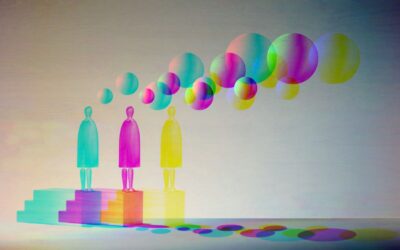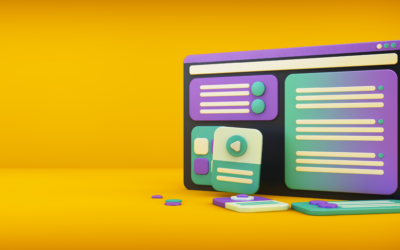Music for the Masses: Technology Adoption and Unintended Consequences
20
Feb 2023
-
CAtegories
-
discover more
‘But for me innovation was and still is … a battle in the marketplace between innovators or attackers trying to make money by changing the order of things, and defenders protecting their existing cash flows.’
McKinsey’s Richard Foster wrote this in 1986 in Innovation: The Attacker’s Advantage. Nearly forty years later, the “changing [of] the order of things” has only accelerated, as the pace of innovation quickens and commercial threats keep C-suite residents reaching for modafinil in the morning and melatonin at midnight. Heck, “defenders protecting their existing cash flows” was even cited by Facebook whistleblower Frances Haugen during her October 2021 Washington testimony as a chief reason the social media giant “prioritize[s] growth . . . over public safety.”
Technology adaptation continues unabated across virtually every industry and job role you can think of. It’s worth pondering what happens within industries when the adoption TIPPING POINT is reached: What’s the digital transformation path forward after a given technology has penetrated throughout?
In the past, the paradigmatic example of the unpredictable and industry-changing disruption of technological progress would have been the plight of the buggy whip maker. Today, the clearest example can be found in your own home, where shelves that once proudly displayed your music collection have been repurposed into minimalist displays for succulents, Funko dolls and Sonos wireless speakers: the unintended and unexpected consequence of a multi-decade transition from owning the albums you bought at Tower Records to a cultural habituation to playlists.
Here’s a four-minute summary of how streaming music has come to rule your speakers.
The Times They Are A-Changin’
The music business has massively evolved in the past 40 years. The four principal drivers of change have been:
- New recording media
- New distribution channels
- New consumption methods
- End of the expectation of ownership
Recording Media
Records ruled for over a century; we were very comfortable with 78s, 45s and LPs for a long time. Then came rapid change: since 1980, we’ve seen the introduction of a succession of digital audio formats, such as CDs (1982), Digital Audio Tape (1987), MiniDisc (1992), MP3 (1993), WMA (1999), AAC (2001), and ALAC (2004).
Distribution Channels
From the local record store to the later dominance of giant chains like HMV, Tower Records and Virgin Megastores, we built our music collections on Saturday afternoons, then played them on home stereos, Sony Walkmans and boom boxes. The Internet’s rise in the late 90s prompted a sea change in distribution scale as services like Napster and Limewire made mass sharing relatively simple, and essentially normalized piracy within younger demographics.
Consumption Methods
For a while, the portable MP3 player category boomed and the Rio player had its fifteen minutes of fame. Then Steve Jobs decided to focus on music. Apple’s 2001 iPod and iTunes launches were massive successes. The 2007 iPhone unveiling kicked off mass penetration of smartphones into markets around the globe. As the power of mobile handsets rose and iPod-like functionality was integrated into smartphones, the attractiveness of CDs plummeted.
Competition among telecom providers that pushed lower-priced, high-volume data plans to the masses also contributed. Subscription services such as Disney, Spotify and Pandora became wildly popular, to the degree that everyone 30 and younger has grown up with this streaming access model as the default. Automakers even kicked CD players out of cars, the final indignity.
Concept of Ownership
Arguably the most important change to music consumption since the 1980s is the replacement of product ownership (you buy records, CDs and even MP3s) with on-demand listening (you stream music you don’t own).
When records and later CDs ruled, music was purchased. You physically bought what you listened to and kept it in your bedroom, car or backpack. Personal ownership of the music you listened to was everything, extending even to creating your own copies and mixes on blank Maxell C-90 cassettes.
This concept—owning your music collection—no longer really exists. For IP and royalty purposes, songwriter and publishing rights remain, but younger demographics don’t spend a nanosecond thinking about those issues: they just want to listen to and share music with their friends. It’s the same for the 30-40 year-old who embraced Napster-enabled piracy.
Unintended Consequences
What happens when music listeners decide that ownership is no longer a priority, or even necessary? They stop buying music. Look no further than SALES FIGURES from the Recording Industry Association of America. Recorded music sales peaked in 1999! CD sales that year were almost $13 billion (87.9% of total revenue!). In contrast, CD sales in 2020 were $483 million. While aggregated streaming now totally dominates as the largest revenue source, the share of these billions allocated to the music makers is far less than it was under the CD sales model.
As English singer/songwriter Lily Allen remarked to Rolling Stone in 2014, “Now that people don’t buy music, we have to find other revenues.” So how do artists make money today? Any way they can. Google “how do musicians make money?” and you’ll find dozens of articles explaining the many entrepreneurial ways they have to pursue if they want to earn a living in a streaming economy.
When playlists rule, the most important revenue source is touring and concerts. Even huge bands that previously enjoyed considerable annual royalty shares of back catalog sales now have to suffer the rigors of touring to play football stadia and indoor arenas.
Did the disrupters at Napster, Apple, Spotify or Disney pause to consider, even in passing, the inevitability that their favorite musicians would have to tour a lot more in the future? Regardless of intent, that is the new reality their business decisions helped create. It isn’t difficult to connect the technological dots and foresee ever more shows and outdoor festivals in the future (ignoring Covid’s 2020-2021 effect, of course).
Avoiding Digital Transformation
Digital transformation initiatives can also produce unexpected results within corporations. Many of the outcomes can be very positive—while others can leave eager innovators scratching their heads and struggling to explain how their organization spent millions on an app that the <insert department name here> group simply refuses to adopt.
Avoiding unintended consequences of the negative kind begins with planning and a holistic awareness of what you’re trying to replace and what a better replacement will look like. It takes a lot of planning beyond the obvious questions and “known unknowns”. Your planning phase should seek out and integrate “softer” concerns like awareness, empathy and acknowledgement, in addition to the more objective “data points” that some prioritize over everything else.
Don’t fall in love with what seems expedient; fall for the direction and the solution that’s really going to improve the workflows and behaviors of the audience for which you’re developing those digital transformation initiatives.







